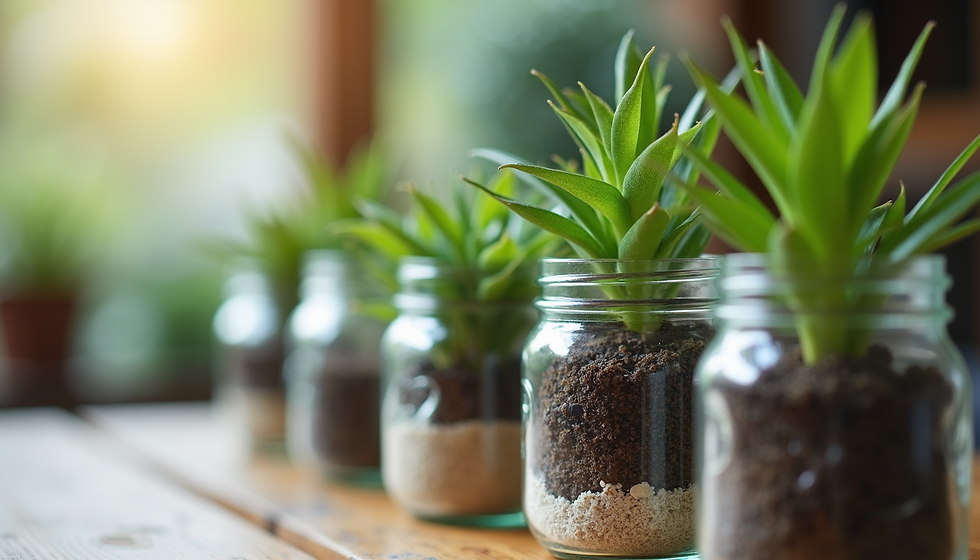New year New Habits!
- echoingeco
- Jan 6, 2024
- 3 min read
Updated: May 20

Hellooooo my Eco-Warriors! Wishing each one of you a very Happy 2024, may this year be full of energy, opportunities and purpose for all of us. I will avoid using the "R" word this time ;) Yes! Resolutions are overrated and often taken for granted. And more often than not we end up breaking up with them. So let 2024 be a start of a lifetime relationship with "Sustainable Habits" instead of just a fling with "Resolutions".
Problem wohi Soch Nai! :)
Replacing single-use plastic products with sustainable alternatives can be a gradual but highly impactful process. Here's a detailed guide on how to make the switch and address common concerns:
Step 1: Identify Target Products
Begin by listing the single-use plastic items you use daily. Prioritize items that are most common and have readily available sustainable alternatives.
Step 2: Research Sustainable Alternatives
Look for sustainable alternatives that suit your needs and lifestyle. Consider factors like convenience, durability, and cost.
Read reviews and seek recommendations from friends, online communities, or sustainability groups. Let me know in comments if you want me to share my recommendations.
Keep in mind that some sustainable options may require an initial investment but save you money in the long run.
Step 3: Start Small
Begin with one or two items on your list to avoid feeling overwhelmed.
Replace items as they run out or as you can afford to switch.
For example, start with a reusable water bottle or shopping bag.
Step 4: Proper Disposal of Existing Plastic Products
Recycling: Ensure proper recycling of plastics if possible. Check local recycling guidelines to understand what types of plastics are accepted.
Upcycling: Some items like plastic containers can be repurposed for storage or organizing.
Consider using programs like Project Mumbai or Terra Cycle, which recycle hard-to-recycle plastics.
Step 5: Conveniently Incorporate Alternatives
Make it easy to use your sustainable alternatives by keeping them accessible. For example, place reusable shopping bags by the door or keep a reusable coffee cup in your car.
Establish a routine: Form habits by incorporating these alternatives into your daily routine.
Step 6: Educate Yourself
Stay informed about the environmental impact of single-use plastics and the benefits of sustainable alternatives. Understanding the "why" can help maintain motivation. Subscribe to our Blog post and follow us on IG to stay updated on the Green front.
Step 7: Be Prepared On-the-Go
Invest in portable reusable items for when you're away from home. Carry a reusable water bottle, coffee cup, and utensils in your bag or car.
Step 8: Share and Encourage
Share your journey with friends and family. Encourage them to make sustainable swaps as well.
Support businesses and brands that prioritize sustainability.
Step 9: Learn and Adapt
It's okay to make mistakes or face challenges. Learn from them and adapt your choices.
Be patient with yourself and recognize that complete elimination of single-use plastic may take time.
Step 10: Track Progress
Keep a log or journal of your progress to stay motivated.
Calculate the environmental impact and cost savings as you reduce your plastic consumption.
Remember, convenience is a crucial factor in sustaining these changes. While some sustainable alternatives may initially require adjustments, many become just as convenient or even more so than their plastic counterparts once integrated into your daily life. Ultimately, the positive impact on the environment and your satisfaction with reducing plastic waste can make the effort well worth it.


Comments